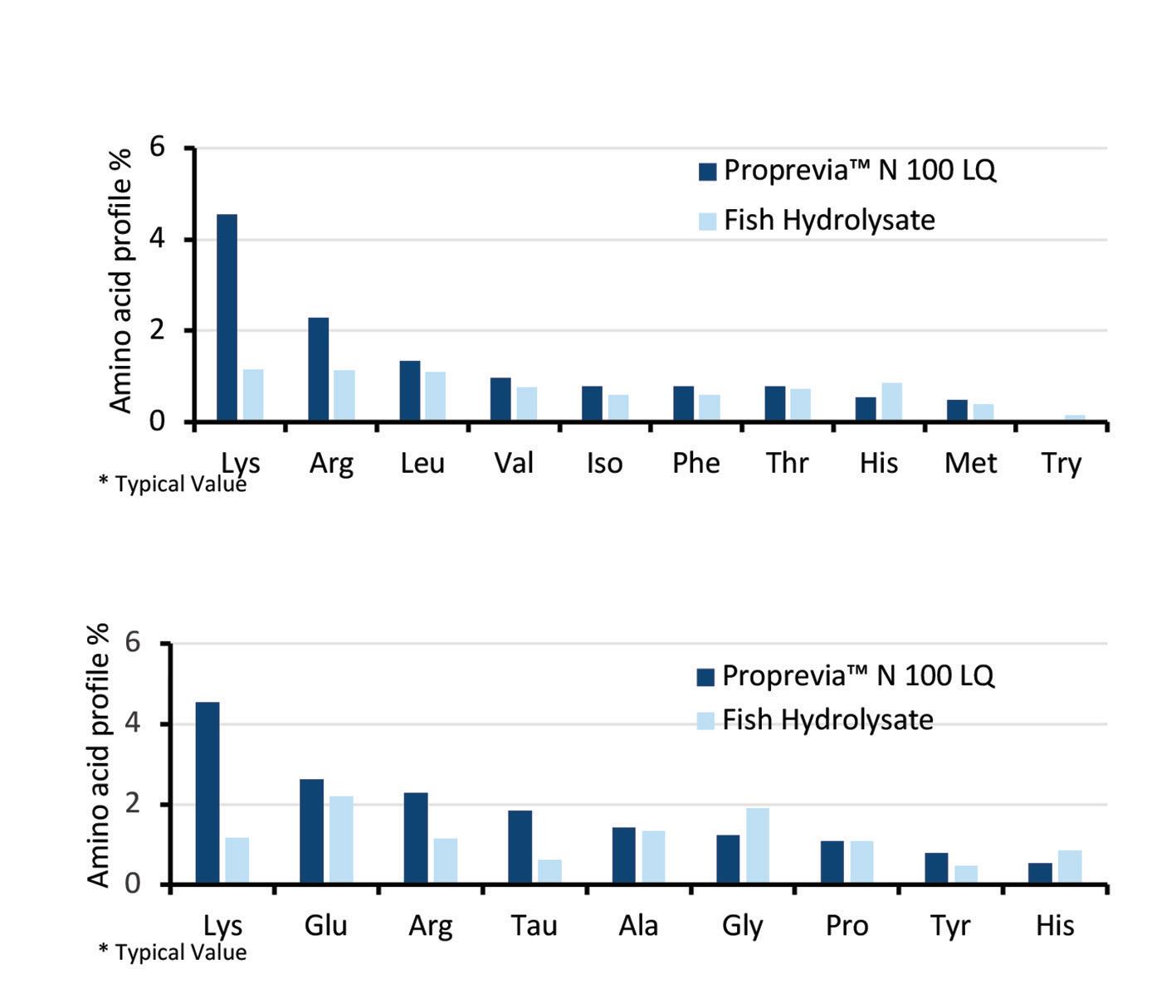
11 minute read
Empowering productive and sustainable aquaculture through bioactive marine peptides
Zhou Hu-Ping, Rahul Mathew, Siok Thing Tan, Koen Meynen, Rajalekshmi M.,
Kemin AquaScience™
Protein utilization in aquafeed
Fully exploited fish stocks stress the aquafeed market in terms of fishmeal supply. To increase sustainability, aquaculture tends to switch from fishmeal to plantbased protein sources. Replacement of fishmeal with new alternatives is complicated and involves many considerations in terms of nutritional profiles, feed palatability, digestibility and the compensation of essential micronutrients that come along with fishmeal. Efforts have been made in replacing fishmeal, which is the main focus in the aquaculture industry now, and the molecules that can functionally compensate for the loss of nutrients, palatability, digestibility and micronutrients when replacing fishmeal with alternatives are crucial in determining replacement success.
Functional protein hydrolysate in aquaculture
Low molecular weight peptides of protein hydrolysates have been studied for their positive effect in diets for many aquaculture species. They have been reported to increase feed intake, feed utilization and somatic growth (Refstie et al., 2004; Aksnes et al., 2006; Zheng et al., 2011, 2013; Khosravi et al., 2015), as well as promote the immune system (Kotzamanis et al., 2007; Ovissipour et al., 2014; Khosravi et al., 2015, among others) and enhance the harmonious development of the skeleton and digestive systems in fish larvae (Cahu et al., 1999; Gisbert et al., 2012; Delcroix et al., 2014; Johannsdottir et al., 2014).
In aquaculture, there is increasing interest to replace fishmeal with functional protein hydrolysate from animal byproducts modified through chemical, enzymatic or microbial hydrolysis of proteins to generate peptides that have both nutritional and physiological functions in animals (Al-Souti et al., 2019). The quality of these functional protein hydrolysates highly depends on the abundance and diversity of different short peptide chains which are subjected to the source of raw materials and methods used for hydrolysis. Presently, there are several origins of animal hydrolysate utilized as protein sources in aquaculture, including shrimp, tuna and squid. The bioactive peptides and corresponding benefits from these origins in animals can vary due to the differences in resulting peptides. Although the complete replacement of fishmeal with animal-derived hydrolysate remains controversial, these hydrolysates still draw a lot of interest from the market to supply the demands of fishmeal alternatives in aquaculture and supplement the key molecules that are similar in fishmeal in the feed formulation adjusted with the protein alternatives. On the other hand, researchers have progressed to seeking bioactivities from these functional hydrolysates such as growth promotion, immunostimulation and palatability enhancement.
New generation shrimp protein hydrolysate
Proprevia™ N 100 LQ, a new type of protein hydrolysate derived from shrimp via enzymatic hydrolysis, is a potential feed ingredient to enhance the palatability of feed and improve the growth and health of aquatic animals due to its enriched profile of free amino acids and peptides with different molecular weights that can stimulate the chemo-sensory mechanism of animals. Compared to typical fish hydrolysate, Proprevia™ N 100 LQ contributes 68% higher essential amino acids
Figure 1. (A) Essential amino acid profile (% total product weight)* Source: KID SPRE-20-18690. (B) Palatant amino acid profile (% total product weight)* Source: KID SPRE-20-18690.
and four times higher lysine content (Fig. 1A). Lysine, the first limiting amino acid, is known to produce maximum feeding response and feed ingestion of shrimp (Chutima, 2014). What’s more, alanine, arginine, glutamic acid, glycine, histidine, proline, tyrosine, taurine are known to be chemo-attractants for both fish and shrimp (Chutima, 2014, Yacoob I, 2003, David TI, 2021).
Comparably, enzymatic hydrolysis is more gentle than other methods such as acid and chemical hydrolysis and higher consistency in hydrolysate quality is achieved. The molecular mass distribution of Proprevia™ N 100 LQ indicates that over 85% of total peptides fall below 1kDa (Fig. 2), which are the peptides with a low molecular weight that have higher digestibility and can be easily absorbed by the animals. Several studies also reported that low molecular weight fractions (<3kDa) possess higher antioxidant capacity than fractions of higher molecular weights.
Effects on palatability and feed intake
One of the key benefits of fishmeal application is its palatability contribution to feed. This chemosensory characteristic of the feed could indirectly affect the ingestion or rejection of the feed to fish and thus the performance of animals. Studies were conducted in fish and shrimp to evaluate the Proprevia™ N 100 LQ in palatability, feed intake, and growth performance.
Asian seabass trial
In an Asian seabass trial, the impact on feed palatability with different inclusion rates coated on the top of the feed was determined. Juvenile Asian seabass were randomly allocated into nine glass tanks of 100L with six fish in one tank. A total of three diets were tested which included the basal diet and two basal diets topcoated respectively with 1% and 3% Proprevia™ N 100 LQ. Fish were hand-fed with a fixed number of diets two times a day and the total number of consumed pellets were recorded. To minimize the reliance of fish towards given diets and accurately determine the preference discrepancies of fish towards assigned diets, the diets given every meal to each tank were swapped randomly. In addition, the formulation of the basal diet was readjusted to partially remove ingredients that could largely contribute to feed palatability to remove interference for the experiment.
Results showed that the total feed intake for diets coated with 1% and 3% was enhanced by 3% and 15.7%, respectively, compared to the control diet within an 8-day experiment period. Moreover, it was found that fish fed on the feed coated with the shrimp protein hydrolysate at a faster rate (0.67 and 0.88 pellet/ sec/tank corresponding to 1% and 3%, respectively), compared to the control diet (0.43 pellet/sec/tank). The fast feeding time by aquatic animals can ensure the high nutrient availability from the feed by avoiding the nutrient leaching when feed immerses in water. The water quality can be also improved since less feed wastage is generated.
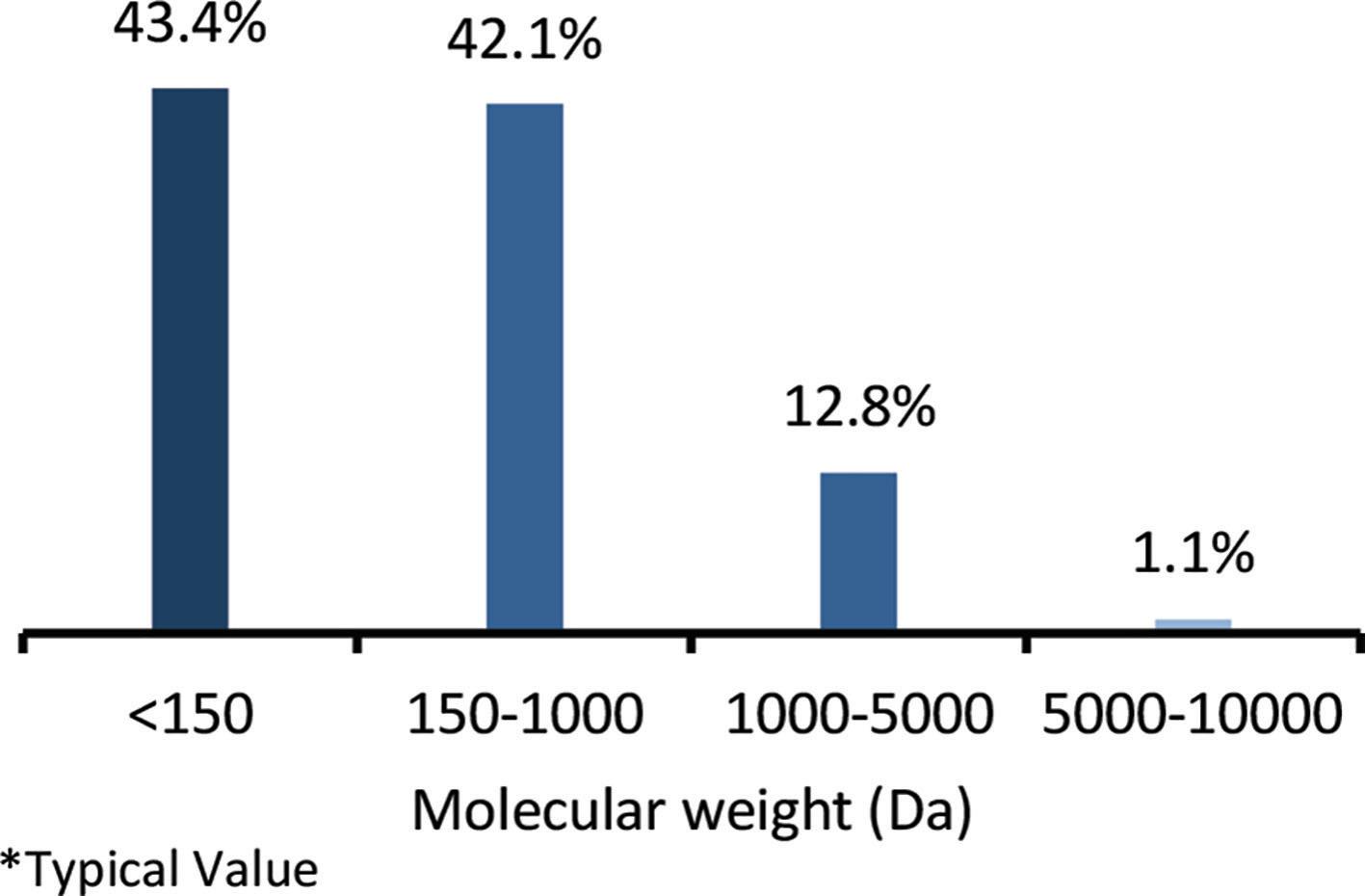
Figure 2. Low molecular weight peptides distribution of Proprevia™ N 100 LQ. Source: KID SPRE-20-18690.
Figure 3. Growth performance of shrimp in normal and low-fishmeal diet. Source: KID SD-21-24007.
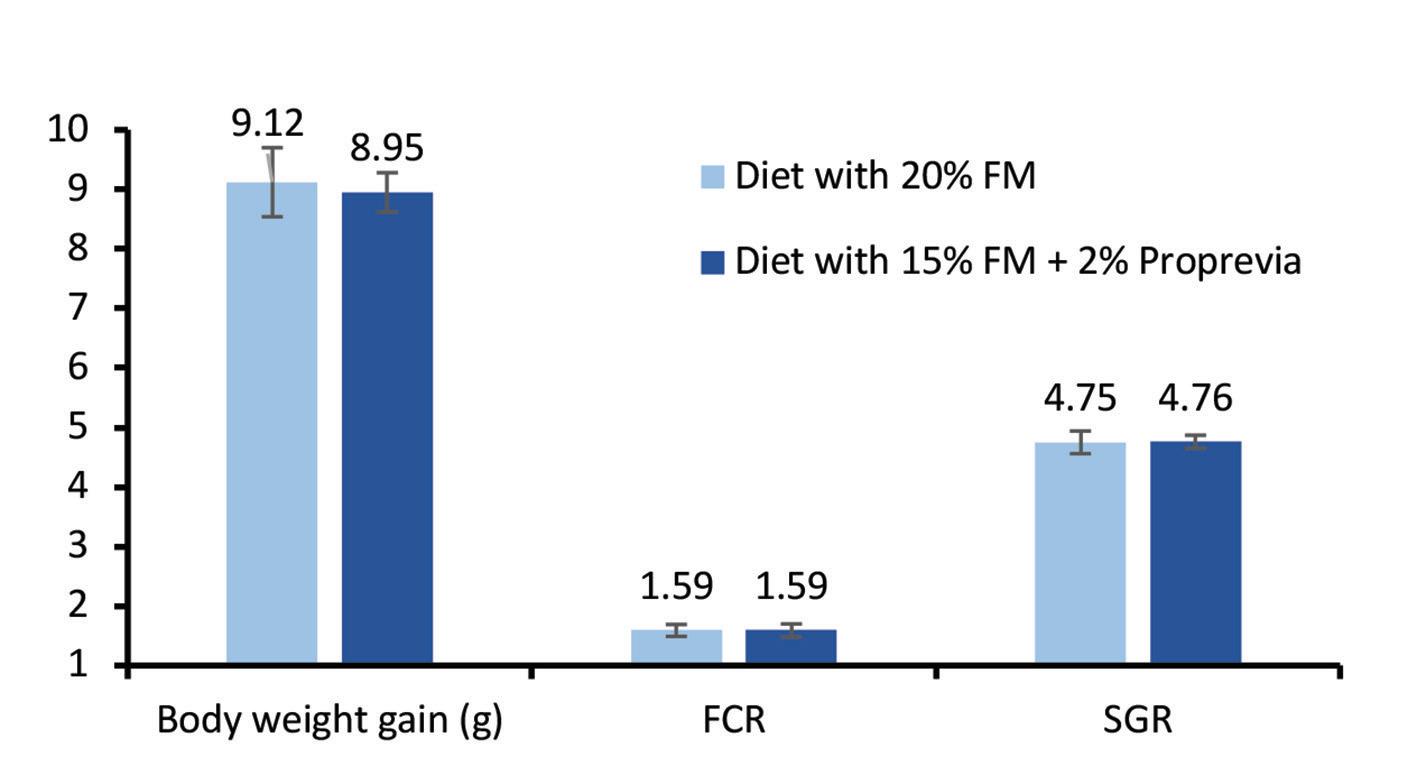
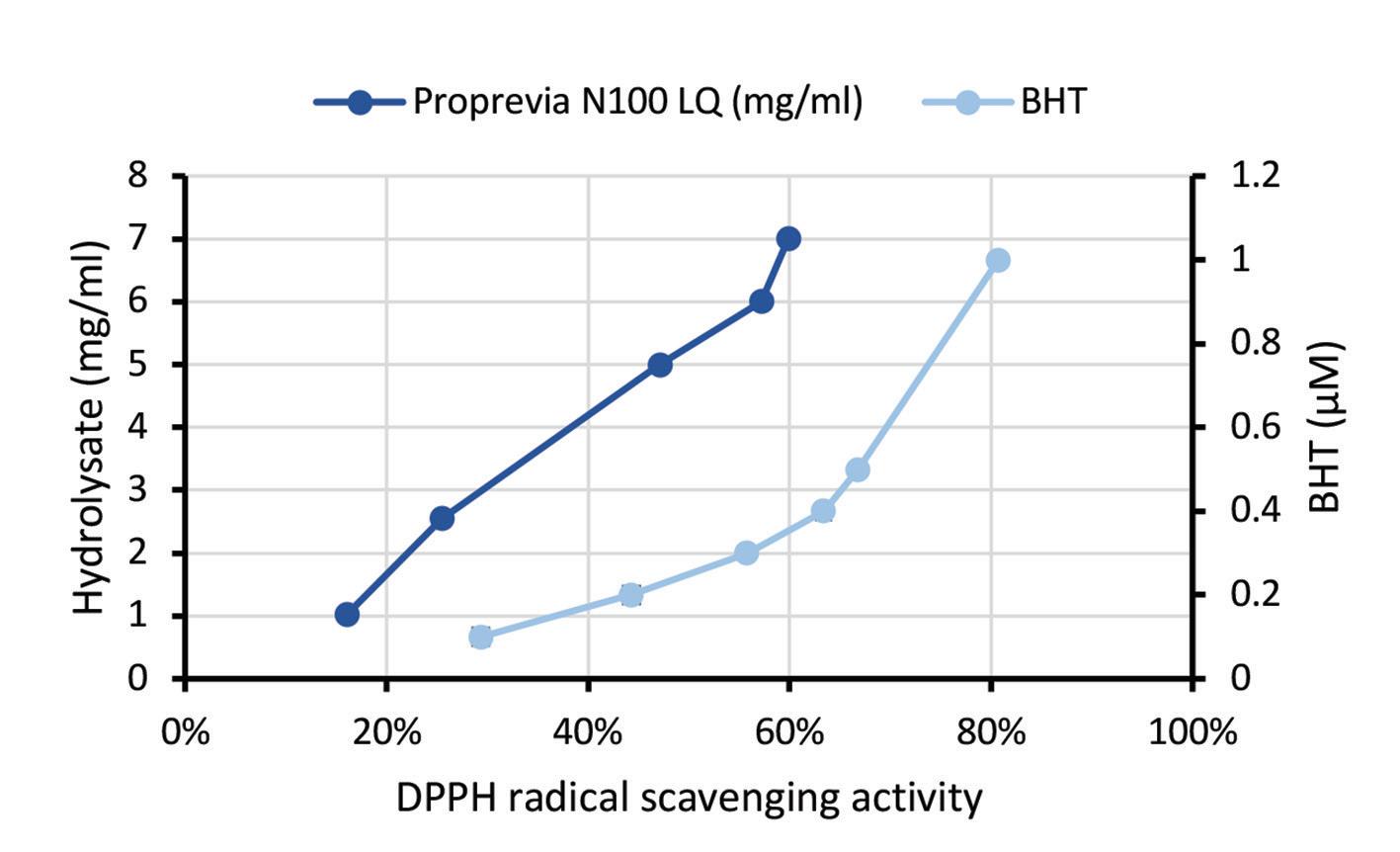
Figure 4. DPPH radical scavenging activity of Proprevia N 100 LQ and BHT. Each point is the average of three measurements. Source: KID SD-21-23938.
Figure 5. ABTS radical scavenging activity of Proprevia N100 LQ and ascorbic acid. Each point is the average of three measurements. Source: KID SD-21-23938.
Shrimp trial
Similar studies were conducted in Pacific white shrimp (Litopenaeus vannamei). Feed intake was compared between feed sample top-coated with 2% Proprevia™ N 100 LQ and uncoated feed. The coated and uncoated feed were placed at different ends of 70L glass tanks. The experiment was done in triplicate tanks, each tank having six shrimps. Prior to placing the feed, shrimps were confined to the middle of the tank using nylon nets and were released 30 seconds after placing feed samples at the two ends. The choice of the shrimps between the two feeds was measured in terms of feed intake. The leftover feed after one hour of feeding was collected and dried to calculate the feed intake. It was observed that the intake of feed coated with Proprevia™ N 100 LQ was significantly (p<0.05) higher than that of the uncoated feed.
The effect of shrimp protein hydrolysate in partially replacing fishmeal in vannamei diets was evaluated in an 8-week growth trial conducted in net-caged earthen ponds with a salinity range of 6-10 ppt. Shrimp juveniles having an initial body weight of 0.68 grams were fed either a 20% fishmeal-containing diet or a 15% fishmeal diet containing 2% Proprevia™ N 100 LQ, 3 times a day at 3-5% of body weight. At the end of the feeding period, both the groups had similar body weight gain, FCR, specific growth rate (SGR) (Fig. 3). The survival rates in the control and Proprevia™ N 100 LQ-supplemented groups were 87.19% and 88.75%, respectively.
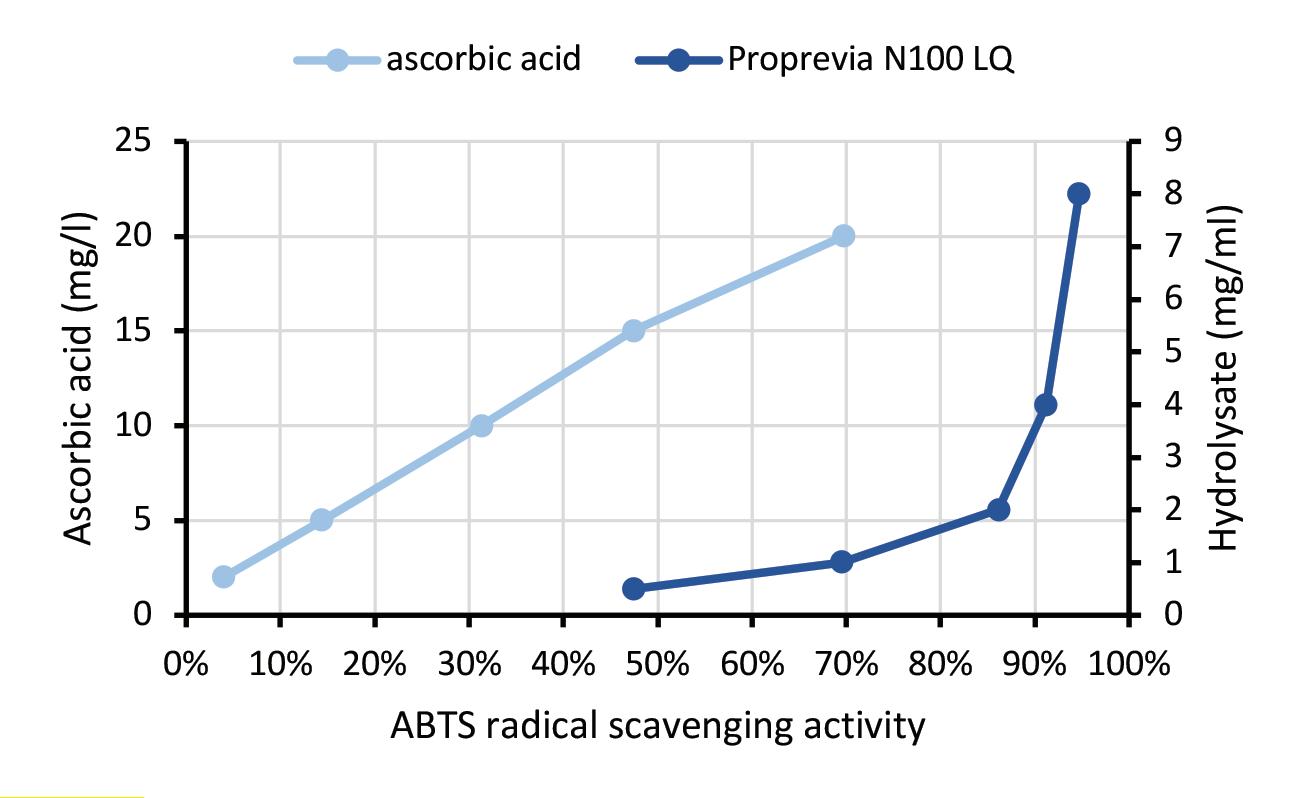
Effects on immune function and antioxidant activity
The health and immunity-related parameters were also measured (Table 1). No significant difference (p>0.05) in the measured parameters was seen between the reduced fishmeal group supplemented
Table 1. Immunity indicator of shrimp in normal and low-fishmeal diet. Source: KID SD-21-24007.
Control diet Treatment diet (15% fishmeal (20% fishmeal) + 2% PropreviaTM N100 LQ
Haemocyte count (x105cells/ml) Phenoloxidase activity (unit/mg protein)
8.5 148.7
7.8 149.2
Super oxide dismutase activity (unit/ml) 22.6
No statistically significant difference was observed between the two groups, in any of the parameters (p>0.05). 23.5
with 2% Proprevia™ N 100 LQ and the control group with higher fishmeal.
Apart from the palatability and effects on growth, protein hydrolysates possess functional benefits like antioxidant properties. The interactions, properties and sequences between amino acids play a big role in exhibiting biological function. For example, cysteine and tryptophan are reported to make a significant contribution due to their structural properties to the antioxidant activities if they are present in the same peptide (Zou et al., 2016). The unique enzymatic hydrolysis process results in the superiority of Proprevia™ N 100 LQ in exhibiting functional benefits for aquatic animals.
One example is resistance against oxidative stress, which could be rendered by environmental and nutritional factors in aquatic animals. Oxidative stress results from the imbalance between the production of Reactive Oxygen Species (ROS) and the inherent ROS buffering system such as glutathione, superoxide dismutase and catalase which serve as a defense mechanism in aerobic organisms to resist the damage caused by ROS. It is also reported that the oxidative stress encountered by animals has been correlated to an increased likelihood of diseases occurrence (Blier, 2014).
The antioxidant property of Proprevia™ N 100 LQ has been evaluated by three different in vitro assays – DPPH radical scavenging, ABTS radical scavenging and linoleic acid oxidation assay. Its antioxidant activity was compared to that of BHT and ascorbic acid in DPPH and ABTS assays, respectively. The comparison
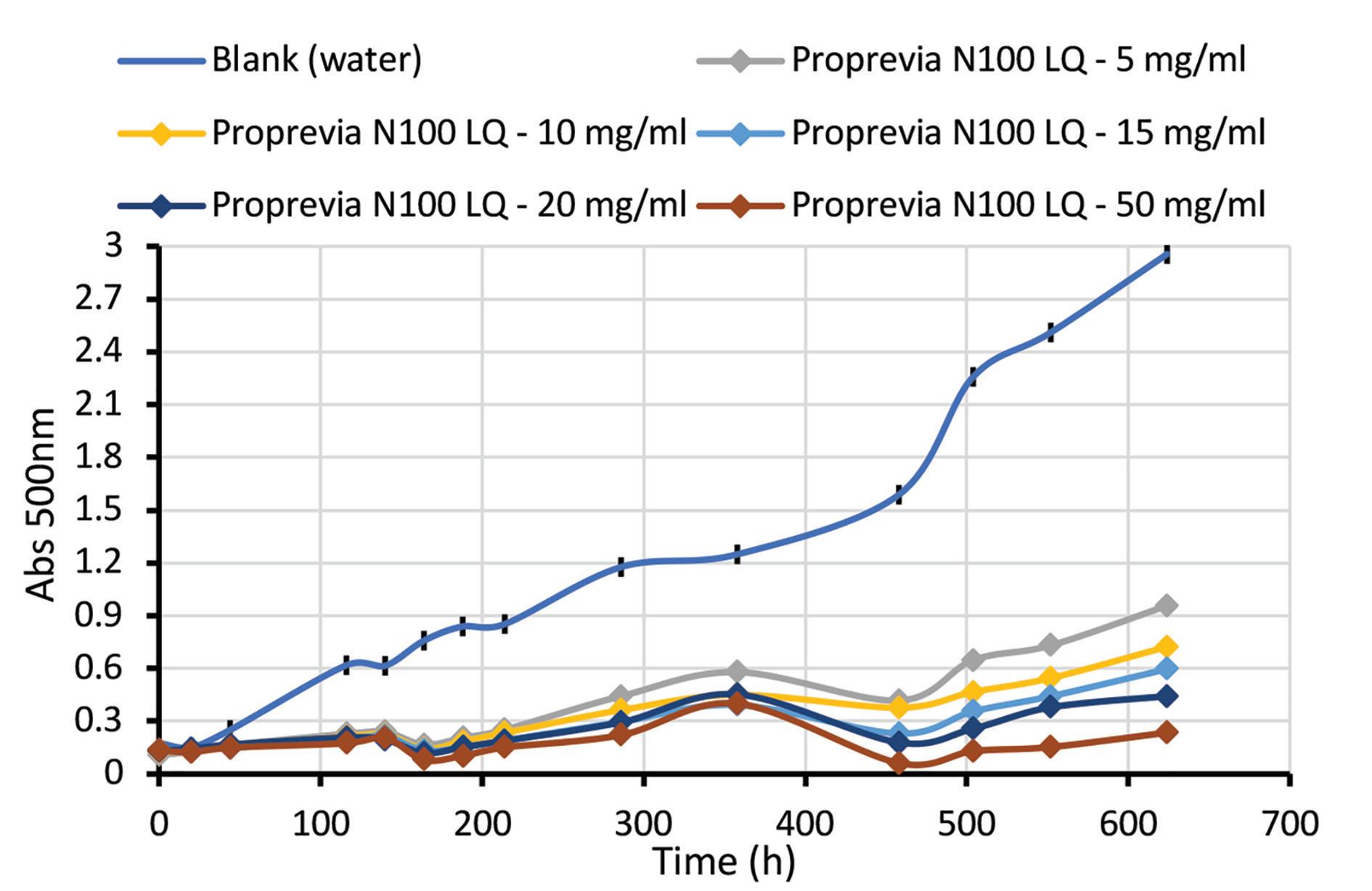
Figure 6. Linoleic acid oxidation test. 50mM linoleic acid in 99.5% ethanol was incubated in the dark at 40°C. The degree of linoleic acid oxidation was measured at regular intervals using the ferric thiocyanate method. The presence of lipid peroxides increases absorption. Source: KID SD-21-23938.
World Leaders in Microwave Moisture Measurement

Hydro-Probe XT Bin | Chute | Conveyor
Hydro-Mix HT High Temperature
Hydro-Mix XT Mixer | Conveyor
Hydro-Mix XT-EX Explosive atmosphere
Accurate, repeatable, real-time

Easy to install & integrate

Remote calibration & confi guration
Local service & support
Contact us for further details
www.hydronix.com enquiries@hydronix.com
was made between the concentration of the test substance needed to obtain a radical scavenging activity of 50%. It was found that Proprevia™ N 100 LQ has a radical scavenging activity equivalent to 1% and 3% of the activity of BHT and ascorbic acid, respectively (Fig. 4, 5).
In the third essay, it was found that the oxidation of linoleic acid decreased with an increased concentration of Proprevia™ N 100 LQ (Fig. 6). With the recommended inclusion level of Proprevia™ N 100 LQ in feed ranging from 1 to 5%, the added radical scavenging potential is equivalent with BHT concentrations sufficient to protect feed against oxidation. However, since the activity of an antioxidant in the feed not only depends on the radical scavenging activity but also on the physical distribution in the feed, the actual impact on the stability of extruded feed will have to be verified in a storage study.
For these peptides to exert their function in vivo, after oral uptake, they must be able to reach the site of activity. Active uptake of peptides in the intestine is effectuated by peptide transporters that shuttle di- and tripeptides. Therefore, only the free amino acids and di- and tripeptides present in the hydrolysate have the potential to act as in vivo antioxidants. The typical molecular weight profile of Proprevia™ N 100 LQ shows that it is rich in very small peptides.
Conclusion
The introduction of new generation shrimp protein hydrolysate brings more possibilities to aquafeed formulation, through superior benefits on nutritional profiles, palatability, digestibility and immunity. Application of Proprevia™ N 100 LQ enables more flexible feed formulation and offsets the potential deviations from various sourced raw materials to ensure the performance of aquatic animals. Aquafeed millers are able to create a more competitive product, and farmers will benefit from consistent and profitable yield.
With the application of Proprevia™ N 100 LQ, better sustainability is adopted by lower dependence on wild-caught marine resources and optimized carbon footprint. In addition, less nutrient waste is generated and nutrient leaching in water is minimized by reducing the duration needed for animals feeding and feed immersion in water by increasing the palatability of feed and feed intake of animals, thereby ensuring the easier practice of pond environment management. References available on request.
More information: Zhou Hu-Ping
Marketing Manager Kemin AquaScience™ E: Ronnie.zhou@kemin.com









